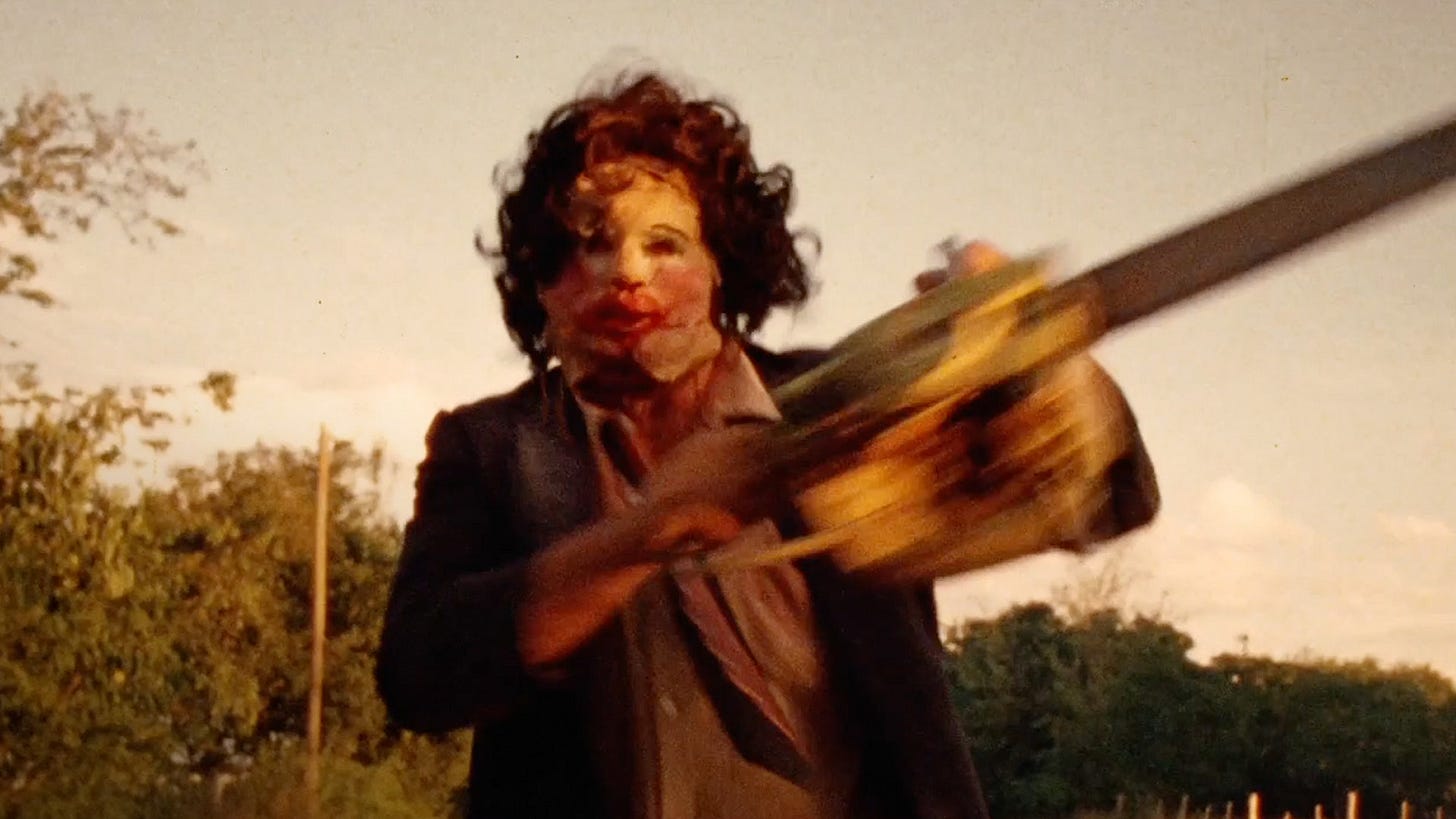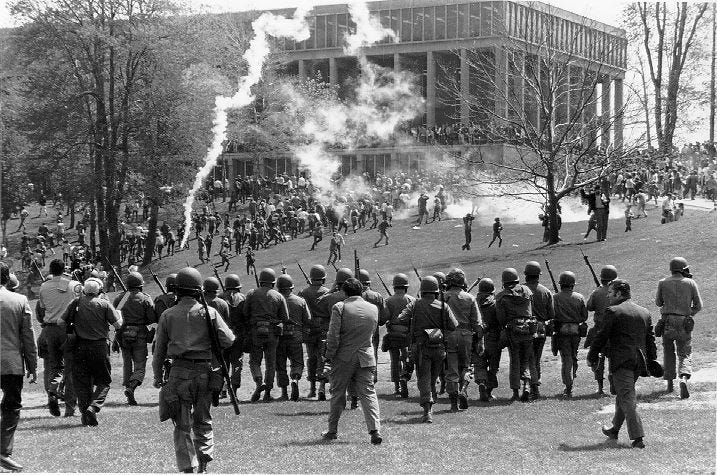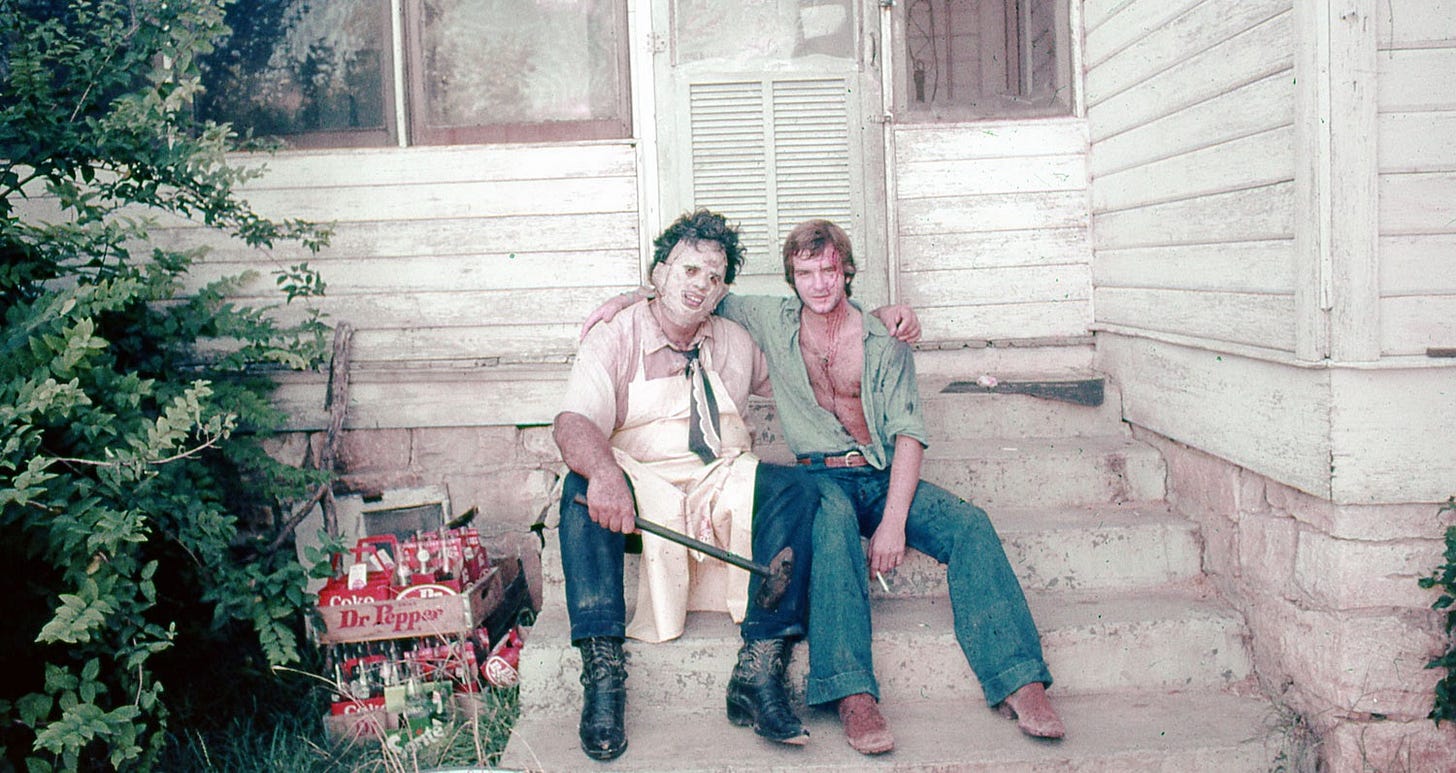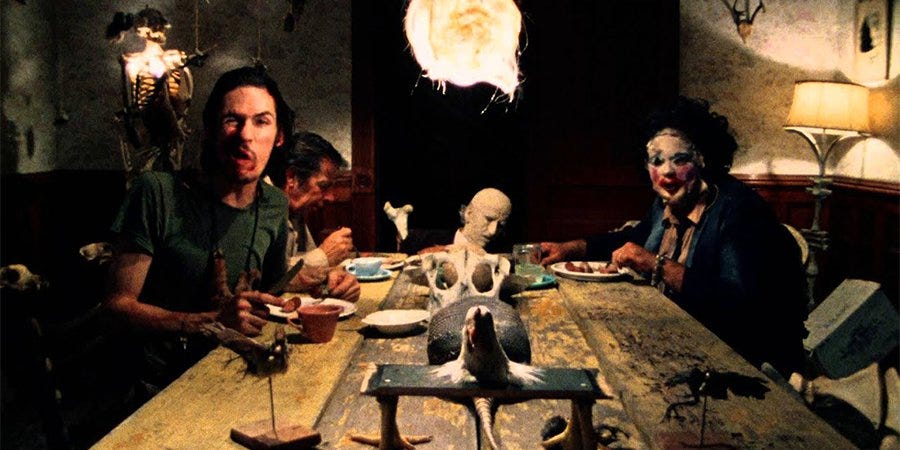Celebrating Texas Chainsaw Day: Why This Horror Classic Still Cuts Deep
Explore how The Texas Chain Saw Massacre captured the fears of 1970s America, reflecting the era’s real-world violence and cultural unrest while redefining horror cinema.
I’ve always been fascinated with The Texas Chain Saw Massacre. Growing up, it was almost like this urban legend amongst the kids at the video store. It was the “scariest movie ever made” that every kid wanted to see, even if you were scared of it. What really gets me though isn’t just the legendary scares. It’s how the movie captures the America of the early ’70s, a country suddenly dealing with more violence than ever, not just out in the streets or in the jungles of Vietnam, but in people’s living rooms. The thing that makes it all so terrifying is how real it feels. The events of this film could happen anywhere, to anyone, at any time. There are no aliens, no ghosts, no supernatural powers, just humans, and that’s what makes it so chilling.
Think about what was going on back in the late 60s and early 70s. JFK was assassinated in front of huge crowds, and it was all caught on film. The Vietnam War was on TV almost every night, showing the horrors of war as they happened. Reading about a battle in the newspaper a few weeks later is one thing. Watching someone die on a tiny black-and-white TV in your own living room was next level. People were forced to face brutality head-on, the same as we do today with the Internet. There was no softening it, no filter. You saw it all, for better or worse.
And that was just the start. Cultural icons like Malcolm X, Martin Luther King Jr., and Bobby Kennedy were all assassinated. Unarmed students got shot at Kent State by the Ohio National Guard. The fight for civil rights and for peace was ongoing. And then there were serial killers like the Zodiac Killer, making people paranoid across the country about who their neighbors might be. All of this was happening while a huge counterculture movement was challenging the country’s values. Young people were questioning everything, rightfully so. There was violence everywhere, change was inevitable, and people couldn’t escape it. It’s in all that chaos that The Texas Chain Saw Massacre really lands, because it’s born straight out of the fears people were already living with.
The genius of The Texas Chain Saw Massacre is that the terror comes entirely from the human element. Leatherface and his family are terrifying because they could exist. The could be your neighbors. They’re not supernatural, they’re not from outer space. You could run into them on some back road in rural Texas. The fear is knowing that humans can be more dangerous than any monster you could dream up. That truth hit hard then, and it still hits now, because it mirrors the unfortunate levels of violence we see in the world around us.
Tobe Hooper leaned into that fear in a big way. The film has almost no blood or gore. What makes it terrifying is how your imagination fills in the blanks. You see Pam hung on a meat hook, but you don’t see the injuries or the blood. Audiences were already absorbing so much real violence through TV and newspapers that their minds did the rest. It was partly to avoid a harsher rating, but honestly, it made the movie scarier than any gore-fest could have. The fear is in the anticipation (a key element of effective horror), in the unseen, and in your own imagination.
The production itself also reinforced the film’s authenticity and heightened its sense of terror. Texas Chain Saw was filmed in rural Texas during a brutal summer heatwave with a tiny budget. All of the cast and crew were exhausted, dirty, and constantly battling the elements - and it shows on screen. Sweat, dust, and grime are all visible on the film print, creating a setting that feels real. That realism is further amplified by the film’s cinematic style. The opening of the film immediately sets the tone with its “based on a true story” introduction. Then the shaky, handheld shots, documentary style, 16mm cameras, and rough cinematography make viewers feel like they are seeing something they were not supposed to see. The visuals truly blur the line between fiction and reality, making the story connect with audiences who were already experiencing these horrors in their lives and on TV. Audiences were not simply watching a horrific story unfold; they were witnessing something that could possibly happen in their own backyard, and that makes the horror even more unsettling.
The Texas Chain Saw Massacre continues to stand out as a classic even fifty years after its release because it relies on implied violence and human behavior rather than spectacle. It does not need jump scares or gore to be effective - one of my favorite styles in the horror genre. The tension in the film comes from your own brain, watching human actions unfold in a way that feels possible. It captured the fears of a violent era in America while still remaining timeless, because human violence is, sadly, universal. It reminded us all that the scariest monsters are usually not fictional. They can be real people, shaped by their culture, history, and unfortunate circumstances. That is why The Texas Chain Saw Massacre is a classic. Its horror comes from reality itself, making it far more unsettling and impactful than any amount of blood or gore ever could.
Now go rewatch the movie again (especially if you haven’t seen it in 4K) because it deserves it!






Such a great reminder about a fantastic movie. Thanks, Jeff!
One of my all time favorites. When I tell people it’s not bloody or gory and they’ll still have trouble sleeping after their first watch, they never believe me. Then I get that text from them the next morning. 😂